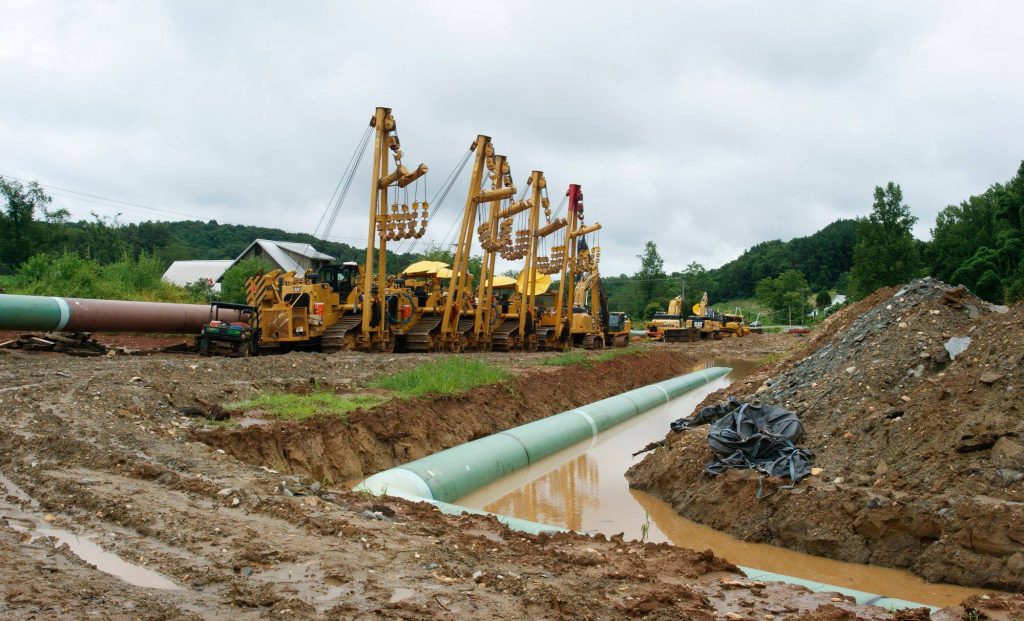Blair Mountain: the forgotten civil war
To the commissioners of Jefferson County, West Virginia it looked like a slam dunk. All they wanted to do was level the 80-year old former Jefferson County jail that sits on the main street of the sleepy community of Charles Town and has not housed any creatures except rats for years. The commissioners planned to replace it with something far more practical –a parking lot. But following their vote three years ago to appropriate $100,000 for the project they soon found out they were treading on hallowed ground, linked to the bitter and often bloody struggles between the United Mine Workers and the mine owners that shaped modern West Virginia. Angry residents of Charles Town, about 50 miles northwest of Washington, D.C., not to be confused with Charleston, the state capital, banded together to mount a challenge which set the commission back on its heels.
First the defenders of the jail got the state supreme court to order the commission to conduct a Historic Review of its plans for the jail, which is on the National Register of Historic Places, the official Federal list of buildings and sites important to our country’s life story. Then they persuaded the West Virginia House of Delegates to adopt a resolution urging preservation of the aged structure. All this was too much for the county commission. In March they voted unanimously to hire a historic architect to plan for the restoration and renovation of the aged edifice.
This hoosegow was still almost new, back in 1921 when the state of West Virginia used it to imprison William Blizzard, the union organizer charged with treason for his role as generalissimo of the march on Blair Mountain by 10,000 union miners, sometimes called “The Civil War America Forgot.”
The victory gained by the jail defenders from the Jefferson County commission last March was followed only a few weeks later by the more heralded decision by the National Trust for Historic Preservation to name Blair Mountain itself as one of the country’s 11 most endangered places, recognition intended to help protect the mountain from strip mining and other depredations.
As the crusades to preserve both the jail house and the mountain demonstrate, the chords of history run strong and deep in West Virginia, particularly when they touch on the struggles of the state’s coal miners and their union. Moreover the saga of the 10,000-man mine workers legion, who staged the greatest armed uprising on American soil since the Civil War, seems freighted with extra salience these angst ridden days because their rebellion capped a period of violence and turbulence with striking parallels to the American experience since September 11, 2001. The Armistice of 1918 silenced the big guns in Europe but left Americans confronting new dangers, real and apparent. Then, as now threats, at home and abroad haunted the public. Fearing an imminent world wide Bolshevist revolution and plagued by labor unrest and disorder in their own country, many citizens blamed the record number of strikes on the plottings of Lenin and Trotsky. Explosions wrecked prominent landmarks. A blast at the corner of Wall and Broad in the heart of Wall Street gutted the House of Morgan and killed 40 passersby. And conspirators used the mails to spread terror.
Bloodshed and the threat of violence cast a dark shadow all across the land, much of it linked to the struggle for ascendancy between unions and business in the uneasy footing of the postwar economy. But nowhere was the tension between union and management greater than in West Virginia. Here the owners of the mines which fueled the nation’s economy, the backbone of American industry, were pitted against the nation’s largest and most powerful labor union, the United Mine Workers, led by an ambitious new president, John. L. Lewis. For Lewis, the non-union coal fields of West Virginia were like a bone in this throat and he set out to bring them into the union fold. But the mine operators, whose economic power allowed them to dominate the state’s politics and its courts, fought back. The result was a series of bloody confrontations culminating in the march on Blair Mountain, which ended only with the intervention of federal troops.
The mine worker’s rebellion died on Blair Mountain. But their spirit lived on to inspire future union men. And years after the guns of West Virginia fell silent, with the help of Franklin Roosevelt’s New Deal, the mine workers finally won the right to organize and gained an ultimate victory for the 10,000 who marched in America’s forgotten civil war.
Related Articles
Latest News

Leave a comment
Your email address will not be published. Required fields are marked *




